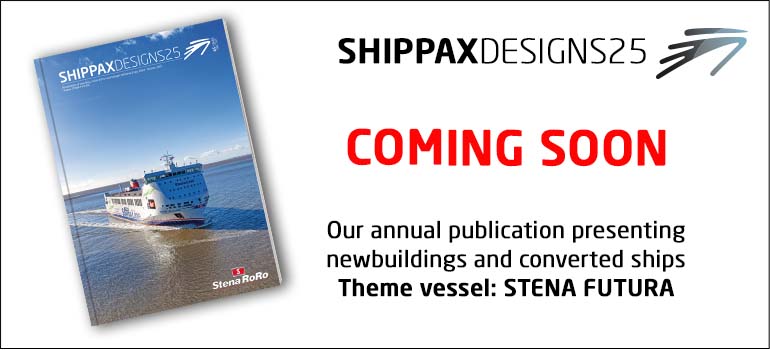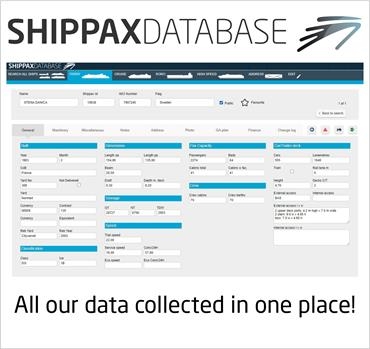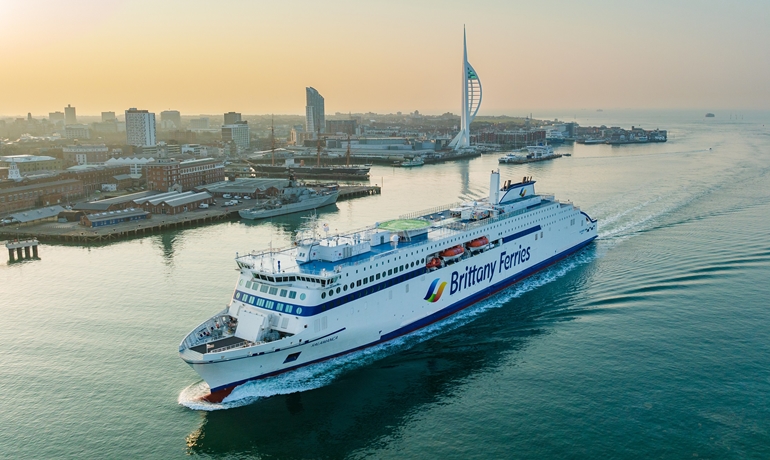
SALAMANCA © Brittany Ferries
Ferry Crossing Costs Revealed for This Summer
Are you planning a holiday? For many destinations, the ferry is an excellent alternative to, for example, the aeroplane. But what's the cost, actually, for a crossing with (or without) the car? Ferry and travel portal FerryGoGo investigated the prices for various crossings this coming summer. They looked at the total costs, the distance, and the cost per kilometre. They also compared the data with last year's prices.
The research included international crossings with overnight stays (>150 km), short international crossings (<150 km), and domestic crossings. The price was based on a return trip for 2 people and a standard car.
Some conclusions and trends that emerge from the data:
- The average distance of international crossings with overnight stays was approximately 600 kilometers - the average price per kilometer is €1.10. While some crossings have significantly increased in price, for example, the crossing from IJmuiden to Newcastle is nearly 20% cheaper than in 2023.
- The most expensive international crossing with overnight stays is from Denmark to Iceland with a total price of €2768, while the cheapest is Hoek van Holland - Harwich.
- The average domestic crossing costs around €4.27 per kilometer. The Netherlands predominates here. Without a car, it's €1.56 per kilometer. The crossing to Texel is comparatively cheap compared to the other Wadden Islands.
- For short international crossings (<150 km), you'll spend an average of about €3.14 per kilometer. The crossing from Hirtshals to Kristiansand is the cheapest per kilometer, while the crossing between Helsingor-Helsingborg has dropped by more than 50%.
- For the most popular crossing: from Calais to Dover, you pay €170 for 2 people and a car. That's €2.13 per kilometer.
- It's noteworthy that the average price level hasn't changed much compared to a year earlier. There are significant differences per connection.
All prices were researched between 19th and 21st February 2024, during which it was also noted that various crossings were almost fully booked for the summer. The analysis focused on the week from 29th June to 6th July, from Saturday to Saturday.
In total, the study examined 34 different crossings: 15 international crossings with overnight stays, 8 short international crossings, and 11 domestic European crossings. Furthermore, the price for 2 people and a car was considered, along with the total price and the straight-line distance. Subsequently, the cost per kilometer for a ferry crossing was calculated.
Overnight Crossings (>150 km)
These are the longer crossings, often with cruise ferries, offering more facilities and entertainment on board. The average price per kilometer of the compared crossings was €1.10 per kilometer.
The crossings from Hoek van Holland to Harwich (-7%) and from IJmuiden to Newcastle (-20%) became slightly cheaper than last year, while the crossing to Hull from Rotterdam became more expensive (+20%).
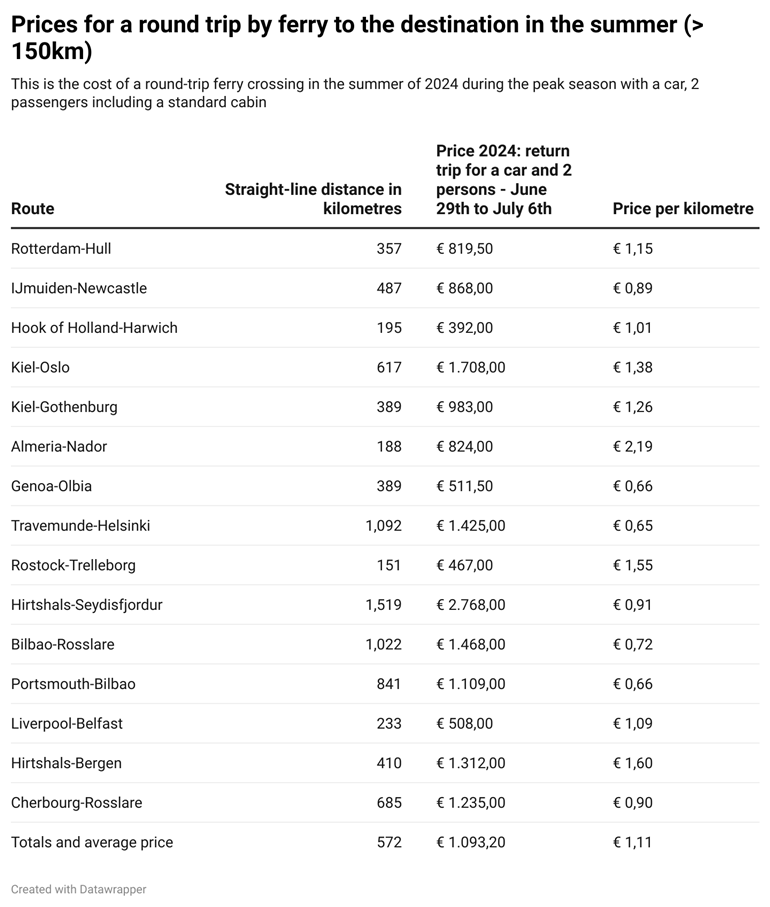
The most expensive crossing per kilometer is the crossing from Almeria to Nador; this summer, you'll pay €2.19 for this crossing.
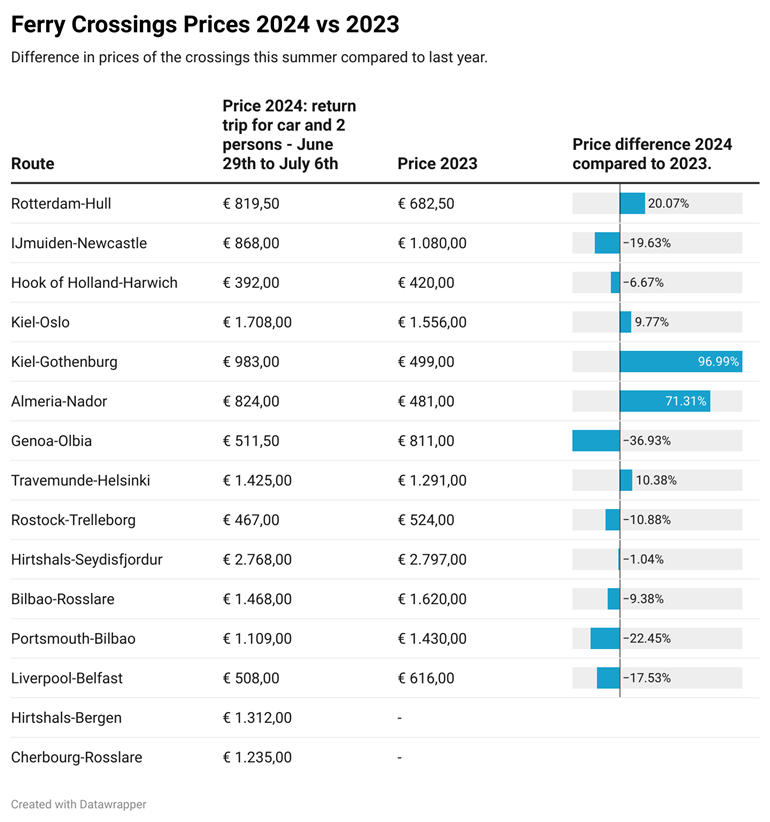
Percentage price differences compared to last year
Short international crossings (<150 km)
There are also many popular crossings where you spend less time on board and therefore don't need to book an overnight stay. The average price for 2 people and a car is €307, and the price per kilometer is around €3.14. On the shortest crossings, the price is relatively high. The price from Helsingor to Helsingborg dropped significantly by about 54%.
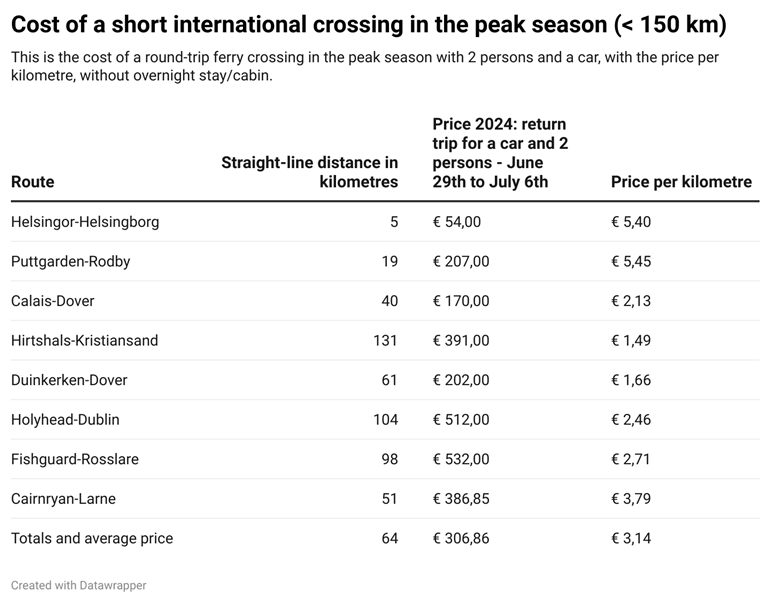
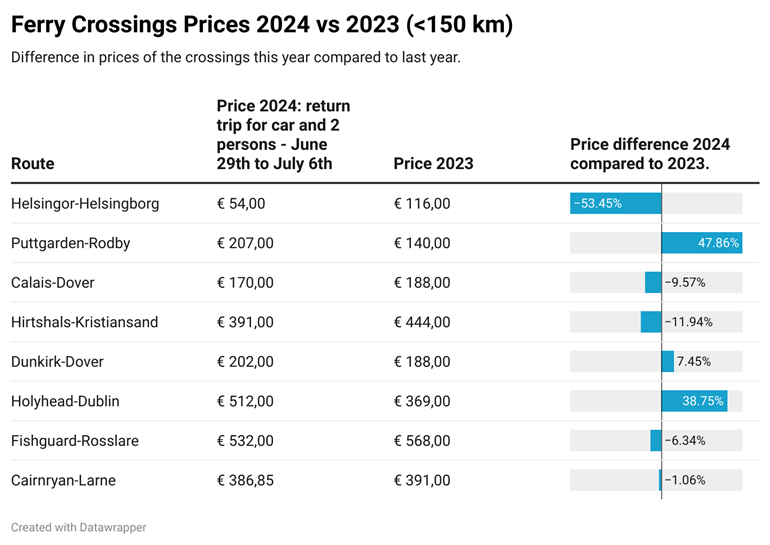
Domestic Crossings
For the domestic crossings, we looked at various routes. Remarkably, most Dutch crossings are quite pricey, except those to Texel. Internationally, prices are considerably lower, but the crossings are often longer.
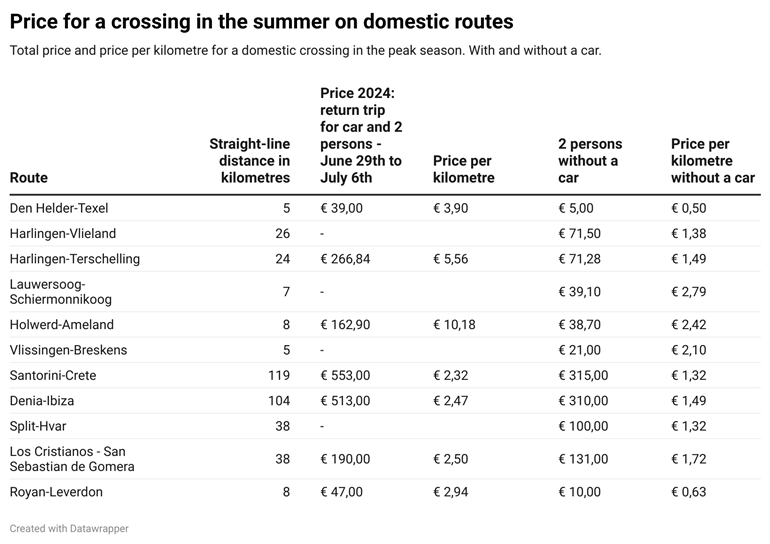
The prices compared to 2023:
The average price level remains fairly consistent compared to a year earlier. The short international crossings even became slightly cheaper on average (-14%). However, there are considerable price fluctuations per specific crossing. While some crossings have become significantly cheaper, others have seen considerable price increases.
FerryGoGo observed price fluctuations of up to 50% in the northern part of Europe heading towards Scandinavia, while on the boats to England, there are price differences within a range of 20%, with prices going up on one route and down on another. Planning to take the ferry to the Wadden Islands? Then you'll find yourself about 8% to 10% more expensive this year.
feb 27 2024
Most read
Incat Tasmania and Molslinjen sign contract for third battery-electric high-speed catamaran
dec 05 2025


